Abstract
The effect of several biotic and abiotic factors on the pattern of competition between two strains of Rhizobium japonicum was examined. In two Minnesota soils, Waseca and Waukegan, strain USDA 123 occupied 69% (Waseca) and 24% (Waukegan) of the root nodules on Glycine max L. Merrill cv. Chippewa. USDA 110 occupied 2% of the root nodules in the Waseca soil and 12% of the nodules in the Waukegan soil. Under a variety of other growth conditions—vermiculite, vermiculite amended with Waseca soil, and two Hawaiian soils devoid of naturalized Rhizobium japonicum strains—USDA 110 was more competitive than USDA 123. The addition of nitrate to or the presence of antibiotic-producing actinomycetes in the rhizosphere of soybeans did not affect the pattern of competition between the two strains. However, preexposure of young seedings to USDA 110 or USDA 123 before transplantation into soil altered the pattern of competition between the two strains significantly. In the Waseca soil, preexposure of cv. Chippewa to USDA 110 for 72 h increased the percentage of nodules occupied by USDA 110 from 2 to 55%. Similarly, in the Hawaiian soil Waimea, nodule occupancy by USDA 123 increased from 7 to 33% after a 72-h preexposure.
Full text
PDF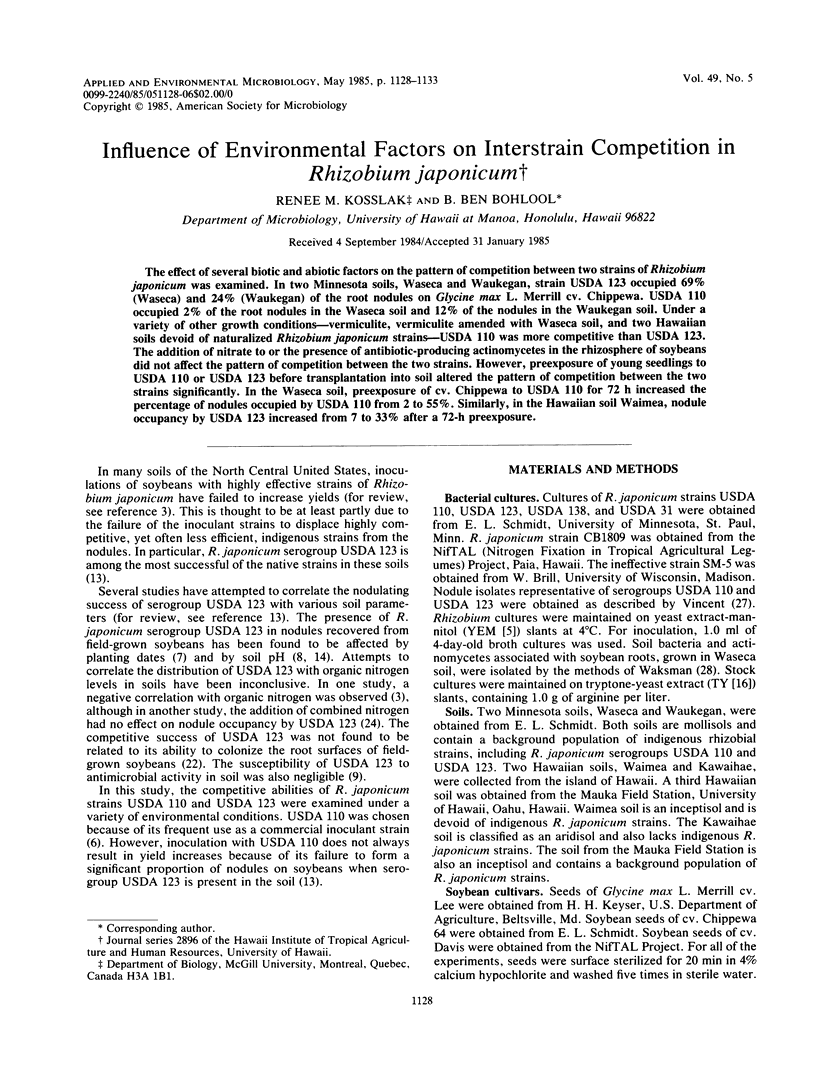
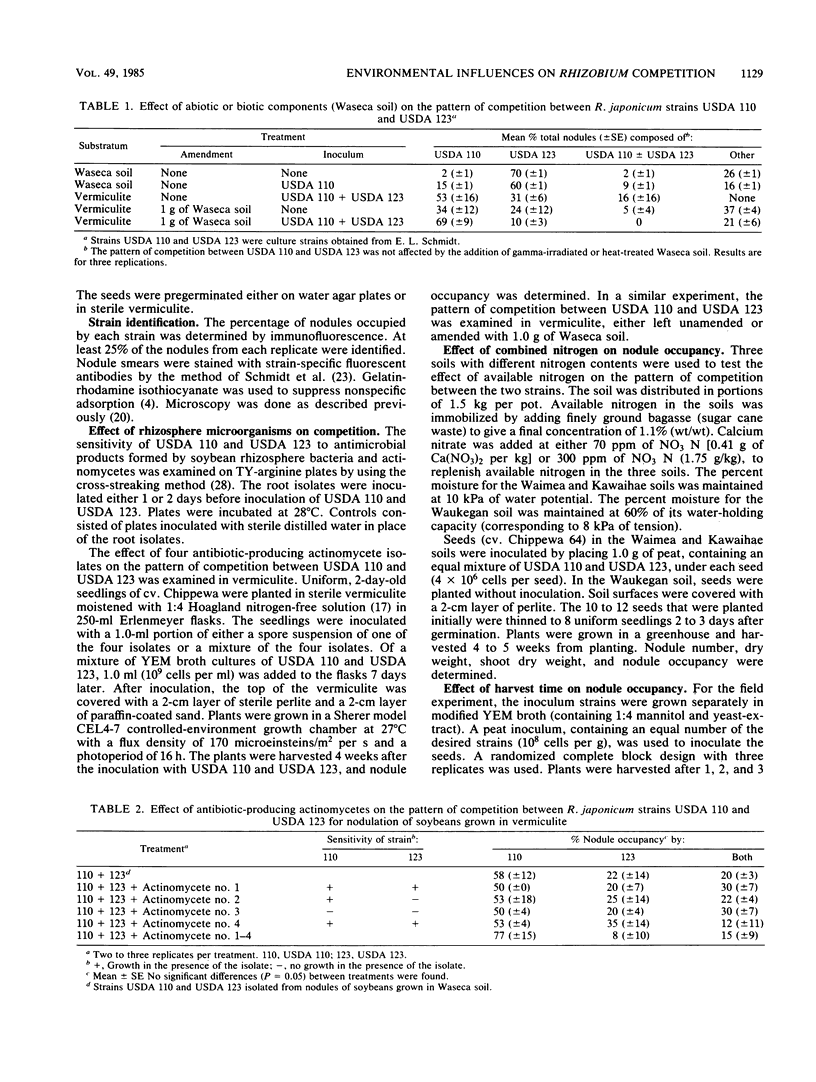
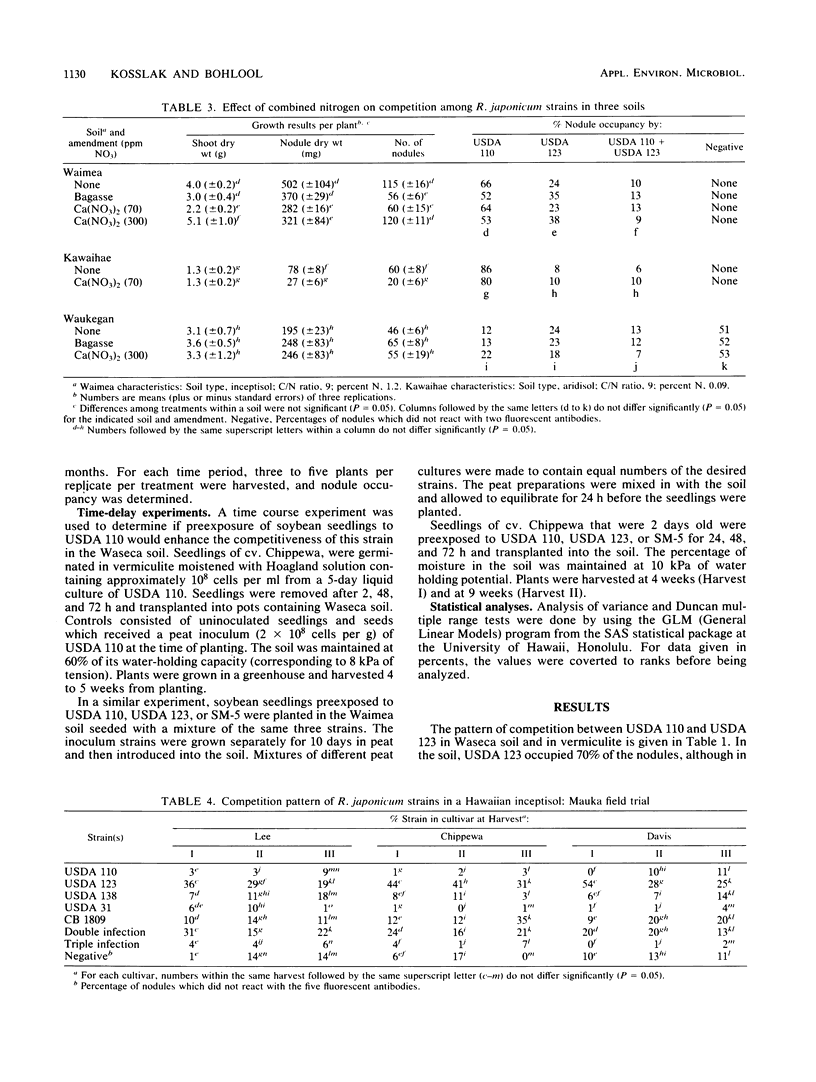
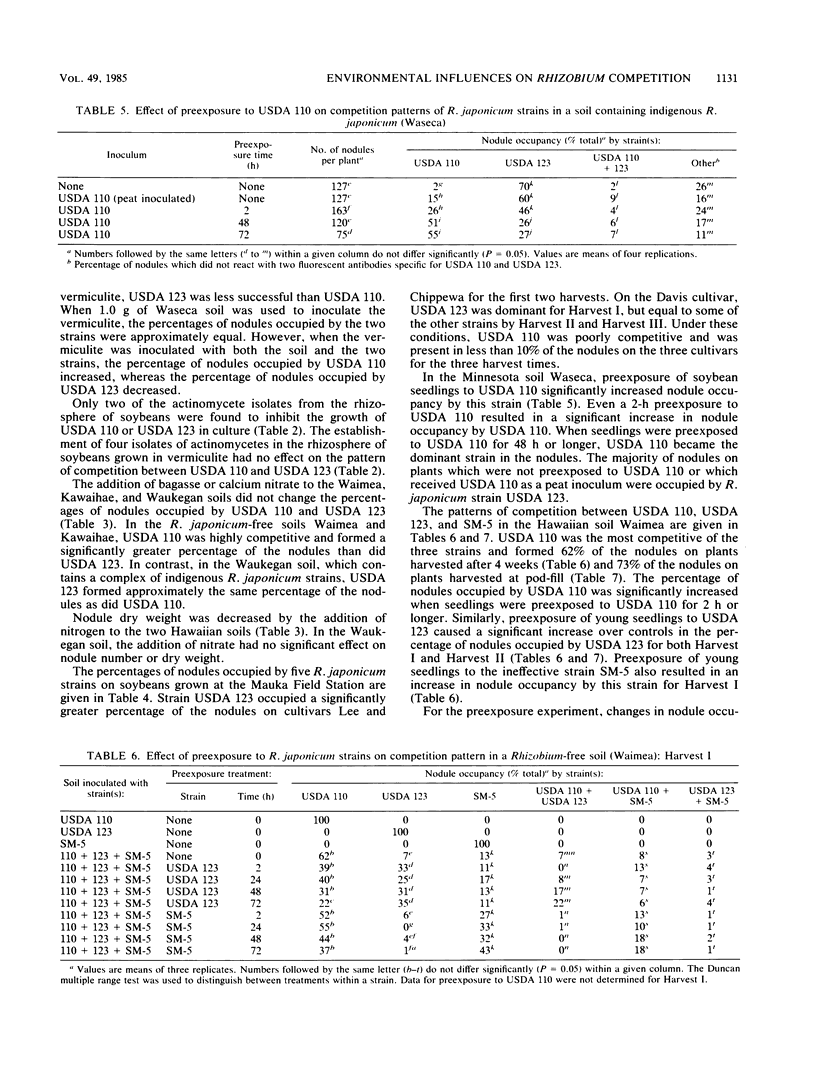
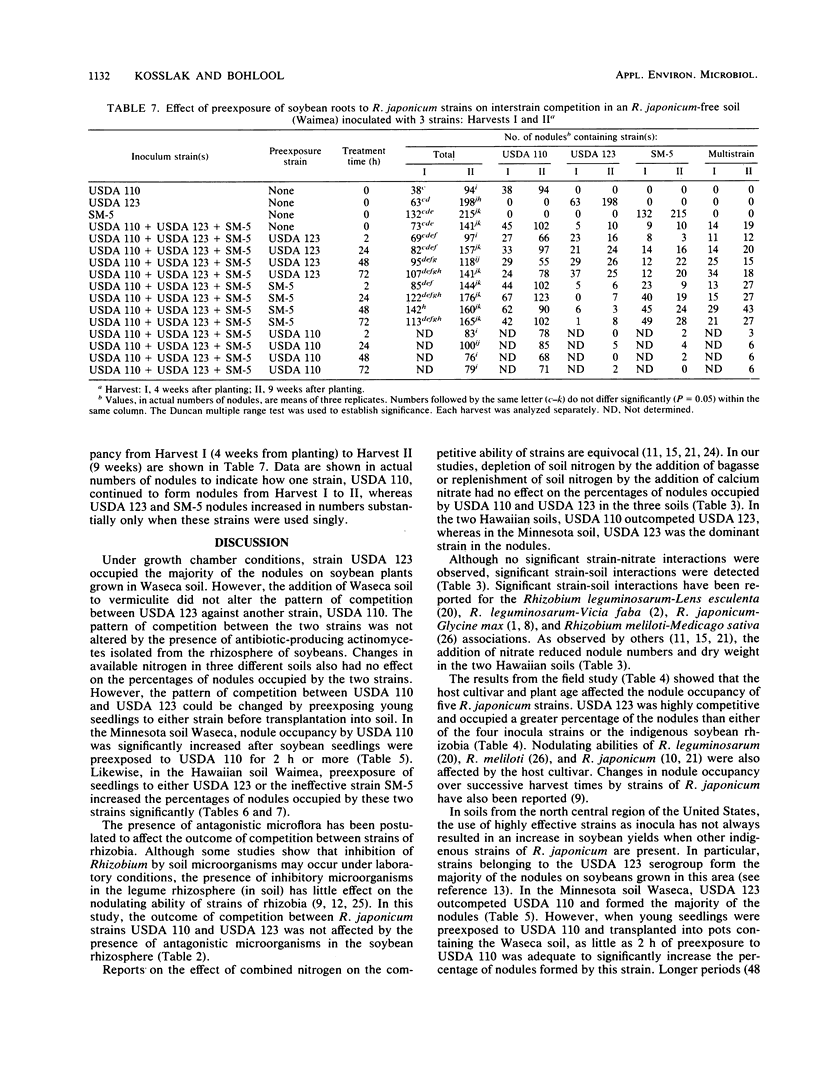
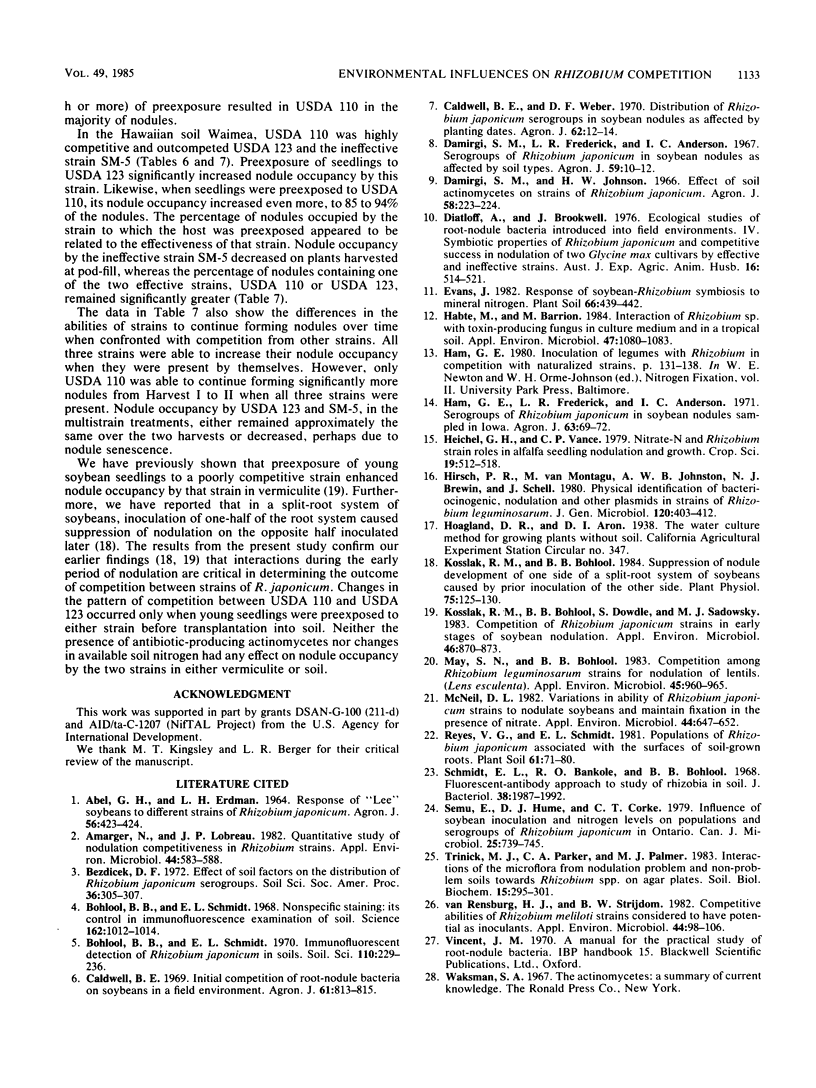
Selected References
These references are in PubMed. This may not be the complete list of references from this article.
- Amarger N., Lobreau J. P. Quantitative study of nodulation competitiveness in Rhizobium strains. Appl Environ Microbiol. 1982 Sep;44(3):583–588. doi: 10.1128/aem.44.3.583-588.1982. [DOI] [PMC free article] [PubMed] [Google Scholar]
- Bohlool B. B., Schmidt E. L. Nonspecific staining: its control in immunofluorescence examination of soil. Science. 1968 Nov 29;162(3857):1012–1014. doi: 10.1126/science.162.3857.1012. [DOI] [PubMed] [Google Scholar]
- Habte M., Barrion M. Interaction of Rhizobium sp. with Toxin-Producing Fungus in Culture Medium and in a Tropical Soil. Appl Environ Microbiol. 1984 May;47(5):1080–1083. doi: 10.1128/aem.47.5.1080-1083.1984. [DOI] [PMC free article] [PubMed] [Google Scholar]
- Kosslak R. M., Bohlool B. B., Dowdle S., Sadowsky M. J. Competition of Rhizobium japonicum Strains in Early Stages of Soybean Nodulation. Appl Environ Microbiol. 1983 Oct;46(4):870–873. doi: 10.1128/aem.46.4.870-873.1983. [DOI] [PMC free article] [PubMed] [Google Scholar]
- Kosslak R. M., Bohlool B. B. Suppression of nodule development of one side of a split-root system of soybeans caused by prior inoculation of the other side. Plant Physiol. 1984 May;75(1):125–130. doi: 10.1104/pp.75.1.125. [DOI] [PMC free article] [PubMed] [Google Scholar]
- May S. N., Bohlool B. B. Competition Among Rhizobium leguminosarum Strains for Nodulation of Lentils (Lens esculenta). Appl Environ Microbiol. 1983 Mar;45(3):960–965. doi: 10.1128/aem.45.3.960-965.1983. [DOI] [PMC free article] [PubMed] [Google Scholar]
- McNeil D. L. Variations in Ability of Rhizobium japonicum Strains To Nodulate Soybeans and Maintain Fixation in the Presence of Nitrate. Appl Environ Microbiol. 1982 Sep;44(3):647–652. doi: 10.1128/aem.44.3.647-652.1982. [DOI] [PMC free article] [PubMed] [Google Scholar]
- Schmidt E. L., Bakole R. O., Bohlool B. B. Fluorescent-antibody approach to study of rhizobia in soil. J Bacteriol. 1968 Jun;95(6):1987–1992. doi: 10.1128/jb.95.6.1987-1992.1968. [DOI] [PMC free article] [PubMed] [Google Scholar]
- Semu E., Hume D. J., Corke C. T. Influence of soybean inoculation and nitrogen levels on populations and serogroups of Rhizobium japonicum in Ontario. Can J Microbiol. 1979 Jun;25(6):739–745. doi: 10.1139/m79-107. [DOI] [PubMed] [Google Scholar]
- van Rensburg H. J., Strijdom B. W. Competitive Abilities of Rhizobium meliloti Strains Considered to Have Potential as Inoculants. Appl Environ Microbiol. 1982 Jul;44(1):98–106. doi: 10.1128/aem.44.1.98-106.1982. [DOI] [PMC free article] [PubMed] [Google Scholar]


